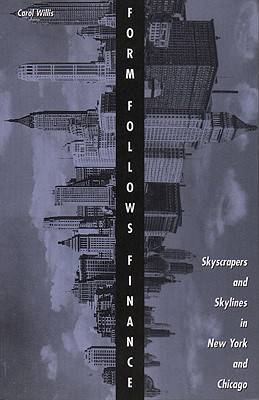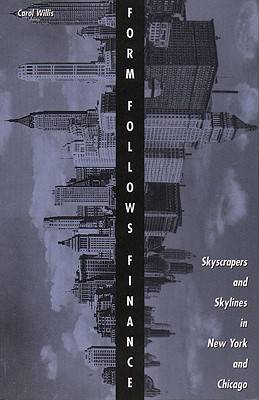
- Retrait gratuit dans votre magasin Club
- 7.000.000 titres dans notre catalogue
- Payer en toute sécurité
- Toujours un magasin près de chez vous
- Retrait gratuit dans votre magasin Club
- 7.000.0000 titres dans notre catalogue
- Payer en toute sécurité
- Toujours un magasin près de chez vous
Form Follows Finance
Skyscrapers and Skylines in New York and Chicago
Carol Willis
Livre broché | Anglais
23,95 €
+ 47 points
Description
Although fundamental factors of program, technology, and economics make tall buildings everywhere take similar forms, skyscrapers in New York and Chicago developed very differently in the first half of the twentieth century. In contrast to standard histories that counterpose the design philosophies of the Chicago and New York "schools," Willis shows how market formulas produced characteristic forms in each city"vernaculars of capitalism"that resulted from local land-use patterns, municipal codes, and zoning. Refuting some common clichs of skyscraper history such as the equation of big buildings with big business and the idea of a "corporate skyline," Willis emphasizes the importance of speculative development and the impact of real-estate cycles on the forms of buildings and on their spatial distribution.
Form Follows Finance cautions that the city must be understood as a complex commercial environment where buildings are themselves businesses, space is a commodity, and location and image have value.
Spécifications
Parties prenantes
- Auteur(s) :
- Editeur:
Contenu
- Nombre de pages :
- 224
- Langue:
- Anglais
Caractéristiques
- EAN:
- 9781568980447
- Date de parution :
- 01-11-95
- Format:
- Livre broché
- Format numérique:
- Trade paperback (VS)
- Dimensions :
- 148 mm x 230 mm
- Poids :
- 462 g

Les avis
Nous publions uniquement les avis qui respectent les conditions requises. Consultez nos conditions pour les avis.






